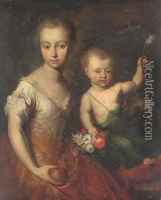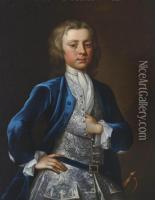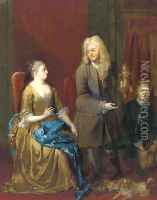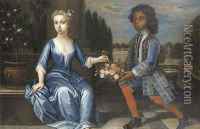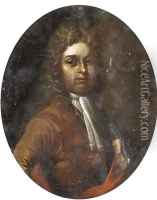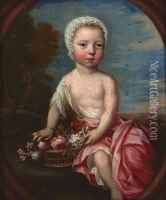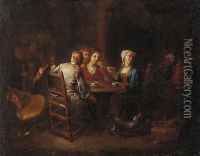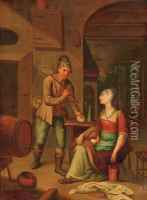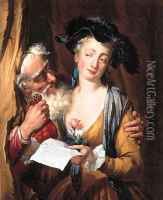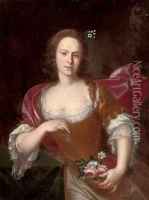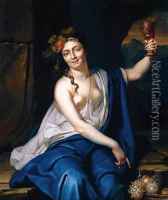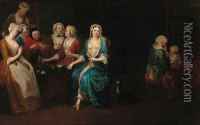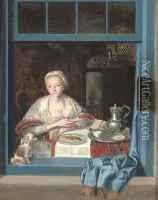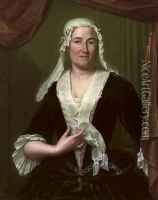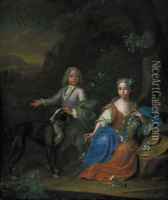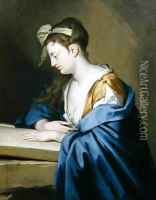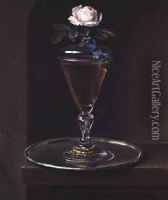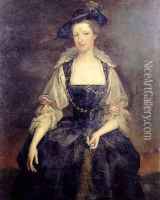Heroman Van Der Mijn Paintings
Herman van der Mijn, also known as Heroman van der Mijn, was a Dutch Golden Age painter who was born in Amsterdam in 1684. He was known for his portraits, still lifes, and historical scenes. Van der Mijn was part of an artistic family, with both his father and brothers also being painters. His father, also named Herman, was a well-regarded painter, and his brothers Cornelis and Andreas also achieved recognition in the field.
In his early years, van der Mijn likely received his initial training from his father before possibly studying under other masters of the time. He developed a refined style, characterized by a strong attention to detail and a keen ability to capture the character and essence of his subjects.
Around 1718, Herman van der Mijn moved to London, where he hoped to find a more lucrative market for his work. His move was part of a larger trend of Dutch artists relocating to England during the period. In London, he became associated with other Dutch artists and continued to produce portraits and other works for a British clientele.
Van der Mijn's work was well received in England, and he gained a reputation for his high-quality work. His portraits, in particular, were appreciated for their elegance and lifelike representation. He also painted still lifes and historical pieces, but it is his portraits that have garnered the most attention from art historians.
Despite his success, Herman van der Mijn returned to the Netherlands later in life. He continued to paint until his death in 1741 in Amsterdam. While not as well-known as some of his contemporaries, van der Mijn's work is still respected for its craftsmanship and contribution to the Dutch Golden Age of painting. His works can be found in various museums and private collections, offering a glimpse into the artistic styles and cultural tastes of the era in which he lived.
